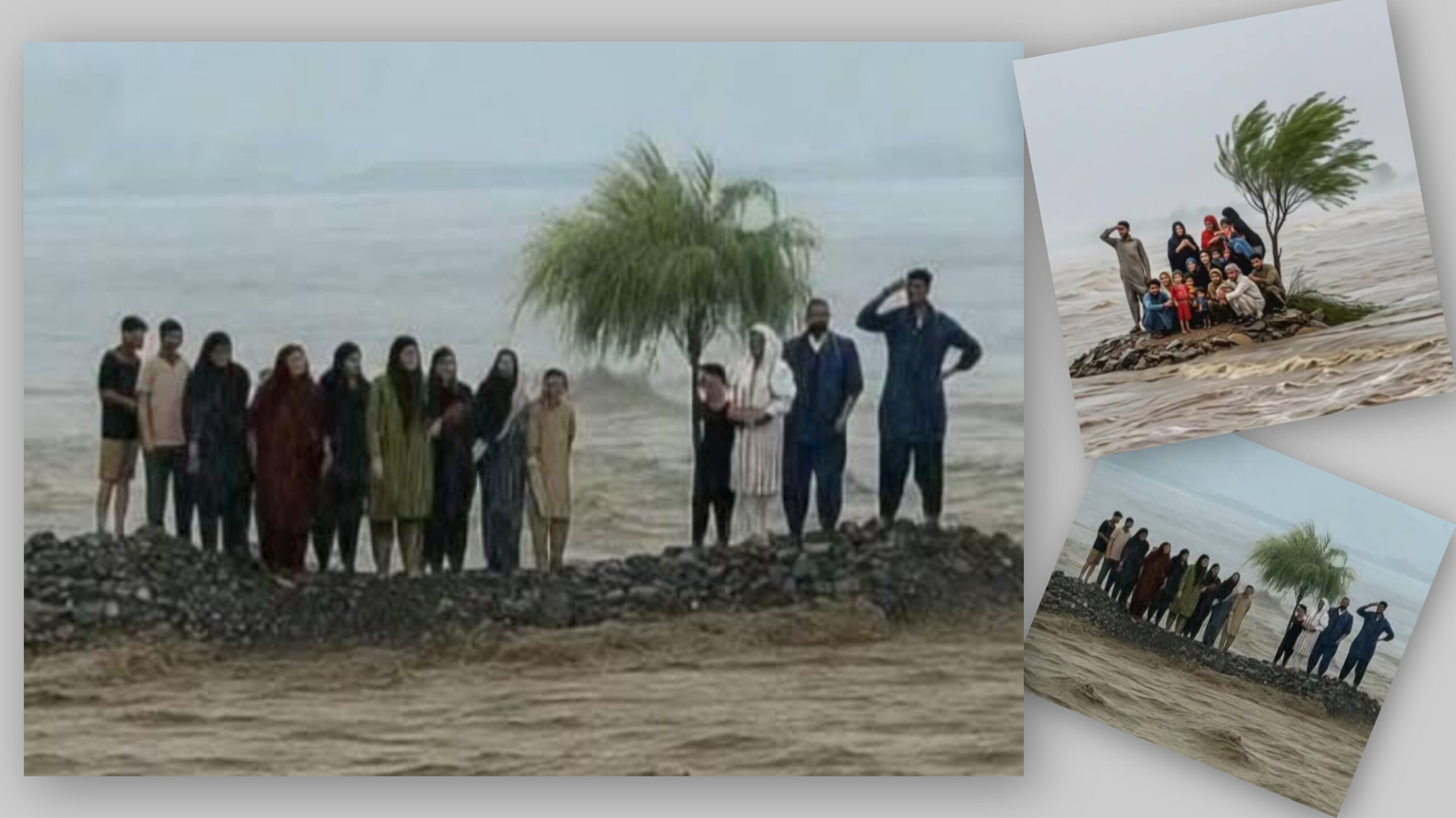Pakistan News – Headline: 16 Lives Lost in Swat Flooding, A Picnic Turned into a Funeral – Where Joy Washed Away! The Govt is unable to save 16 “Humans”
Swat Valley, Khyber Pakhtunkhwa — What began as laughter and morning tea on the sun-dappled banks of the Swat River on June 27, approx 10:00 AM, transformed within minutes into a scene of terrifying chaos. Shouts of fear replaced songbirds as a monstrous surge swept tourists—some among them children—into the embrace of merciless waters.
A Morning of Innocence
Families from Sialkot and Mardan had gathered on a sandy bank at Mingora’s bypass road near Fizagat Park, a favored weekend retreat. They picnicked at dawn, unaware that heavy pre‑monsoon rains upstream had sent torrents racing downstream. According to the KP Irrigation Department, the river flow increased from a tranquil 6,738 cusecs to a staggering 77,782 cusecs by mid-morning (thenews.com.pk).
At first, the river crested gently. But in a matter of moments, its mood turned deadly. Eyewitnesses recall water that “rose swiftly around them,” leaving around 17–19 people—including elderly relatives and children—marooned on a suddenly isolated sandbar.
The Viral Scream
Drone and mobile videos captured the terror: stranded families pleading for help, children’s sobs punctuating the roar. For over an hour, they waited. For 19 minutes, rescue teams stood by, ill-equipped—without boats, ropes, or trained divers. Locals reported: “They told us they didn’t have the necessary arrangements”.
While heroic locals like Muhammad Hilal saved a few, the scene was harrowing. As one observer said, “Women and children… trapped…and onlookers watched in shock”. The world watched too—intense footage flooded social media, kindling outrage.
Rescue and Aftermath
Rescue 1122, supported by the army and NDMA teams, eventually responded, sending about 120 personnel across Swat, working in tandem with divers and local police. Their efforts saved around 58 people amid widespread floods, but for many families that ringed the sandbar, hope had already been lost (apnews.com).
By the evening of June 27, nine bodies had been recovered; dates in local hospitals and morgues began filling. Over subsequent days, 12 from the main group were found, with more recovered through Charsadda and Mingora. Official tallies vary—16 to 17 drownings across two families, 11 in Swat alone, and 46 deaths nationwide in Pakistan. Approximately tied to monsoon rains by June 30 (daynews.tv).
Victims ranged from toddlers to grandparents, their bodies escorted home through tear-stained streets. A hostel in Sialkot received coffins as communities grieved, a joy turned nightmare.
Anger That Refused to Subside
Grief quickly gave way to fury. Crowds gathered at Mingora’s Nishat Chowk, demanding resignations, legal action, and a complete overhaul of safety protocols. Protests accused provincial authorities of “complete unpreparedness” after warnings failed to trigger action. KP Governor and others demanded accountability, with whispers of high-level blame (dawn.com).
Warnings Left Unheeded
A damning report from the Irrigation Department revealed that it had issued multiple alerts via WhatsApp—starting at 8:41 a.m.—culminating in a “severe flood warning” at 10:30 a.m., minutes before the tragedy struck. Yet, enforcement collapsed. Section 144 bans were in place, but site managers and government bodies failed to act. Hotels brazenly placed charpoys and tables within prohibited zones.
Illegal quarrying had left sandbanks exaggerated and easy to access, drawing tourists dangerously close, then imprisoning them when the waters turned lethal.
Response Measures: Within some days, KPK authorities implemented emergency bans on riverbed mining, sealed off vulnerable riverbanks, and initiated crackdowns on hotels and tourist places. Four senior officials—including the Swat Deputy Commissioner and Rescue 1122’s district head—were suspended; a high-level inquiry was ordered, and every step will be live on PAK News Channels.
Compensation of approximately Rs 1.5 million per victim was announced,d, along with pledges to equip future rescue missions with boats, drones, and trained divers.
Wider Warning
This tragedy is neither isolated nor surprising. It is a stark symptom of Pakistan’s mounting vulnerability to climate extremes—warnings foretold by the 2022 floods that claimed over 1,700 lives (theguardian.com). With the monsoon season still unfolding, the NDMA cautions of continuing storm threats.
Environmentalists cite crumbling riverbanks, deforestation in Swat Valley, and unchecked tourism as weak links in a chain ending in heartbreak. Dawn’s pain-filled editorial lamented a “pattern of neglect and lack of foresight” and pressed for “seasonal risk maps” and prepositioned rescue assets for future seasons.
Lessons That Must Speak
- Early warning should be followed by early action- alert chains are irrelevant unless there is implementation.
- Rescue readiness: boats, drones, divers, and helicopters must be mobilized before disasters strike, to avoid human losses.
- Strict zoning enforcement: riverbanks are no picnic zones during monsoon; encroachments must be removed, or closed till monsoon ends.
- Environmental safeguards: halt illegal mining and restore tree-buffer zones to dampen flood impact.
- Tourist education: signage and public campaigns are vital in high-risk areas, have to manage everything with accuracy.
Echoes of Grief, Promises of Change
The victims of Swat—children with birthdays uncelebrated, parents whose vacations turned into funerals—ask nothing but a future where their deaths were not in vain. Their final hours, captured on video and etched in social memory, ignite a crucial demand: strengthen systems before monsoon flings them back into tragedy.
This river, once integral to Swat’s beauty and life, now whispers a warning: if administrative indifference persists, laughing mornings may once again drift into screams at dusk. Let this sorrow guide us toward safer shores. Read More News with Us






k6fjso
Получите качественную юридическую помощь онлайн на сайте бесплатная юридическая помощь онлайн[/url>.
является крайне важной. Сложные юридические ситуации нуждаются в квалифицированной поддержке. Посещение юриста помогает понять сложные правовые аспекты.
Проблемы с правом побуждают граждан обращаться к юристам. В некоторых случаях юридические услуги становятся критически необходимыми. Необходимо обратиться к опытному юристу для эффективного разрешения вопросов.
На сайте можно найти множество информации о юридических услугах. Здесь размещены контактные данные специалистов, которые готовы помочь. Необходимо заранее определить, к кому обращаться за юридической помощью.
Обращение к юристу — это шаг к защиті своих интересов. Не откладывайте на потом задавание вопросов специалистам. Юристы всегда готовы поддержать вас в решении правовых задач.
Как эффективно продвинуть сайт: пошаговое руководство для каждого
映画ファンの皆さま、様々なテーマに沿った映画コレクションを紹介するプラットフォームをご紹介します。各作品には公式トレーラーとポスター画像が掲載されており、次に見る映画を選ぶ際の参考としてご活用いただけます。Amazonの作品ページへのリンクも用意されており、詳細情報の確認や、必要な情報をワンストップで得られます。このサイトは、貴方の好みに合った作品発見をサポートすることを目指しています。https://app.gitter.im/#/room/#eigamaster:gitter.im
映画ファンの皆さま、様々なテーマに沿った映画コレクションを紹介するプラットフォームをご紹介します。掲載されている全作品にトレーラー動画とポスター画像が付随しており、次に見る映画を選ぶ際の参考としてご活用いただけます。各作品のAmazonページへのアクセスも容易で、、効率的に次の映画探しが可能です。映画選びの時間を有意義な発見の時間へと変えるとなるでしょう。https://suzuri.jp/eigamaster
映画ファンの皆さま、多彩なジャンルや趣向に対応した映画ガイドサイトをご紹介します。掲載されている全作品にトレーラー動画とポスター画像が付随しており、次に見る映画を選ぶ際の参考としてご活用いただけます。各作品のAmazonページへのアクセスも容易で、、効率的に次の映画探しが可能です。このサイトは、貴方の好みに合った作品発見をサポートすることを目指しています。https://hedge.fachschaft.informatik.uni-kl.de/s/ccme-LCxB
映画ファンの皆さま、テーマ別の厳選された映画リストを提供するサイトをご紹介します。掲載されている全作品にトレーラー動画とポスター画像が付随しており、次に見る映画を選ぶ際の参考としてご活用いただけます。さらに、Amazonでの詳細情報や視聴・購入への直接リンクも完備しており、必要な情報をワンストップで得られます。映画選びの時間を有意義な発見の時間へと変えるとなるでしょう。https://www.magcloud.com/user/eigamaster
Some genuinely excellent content on this web site, thankyou for contribution.